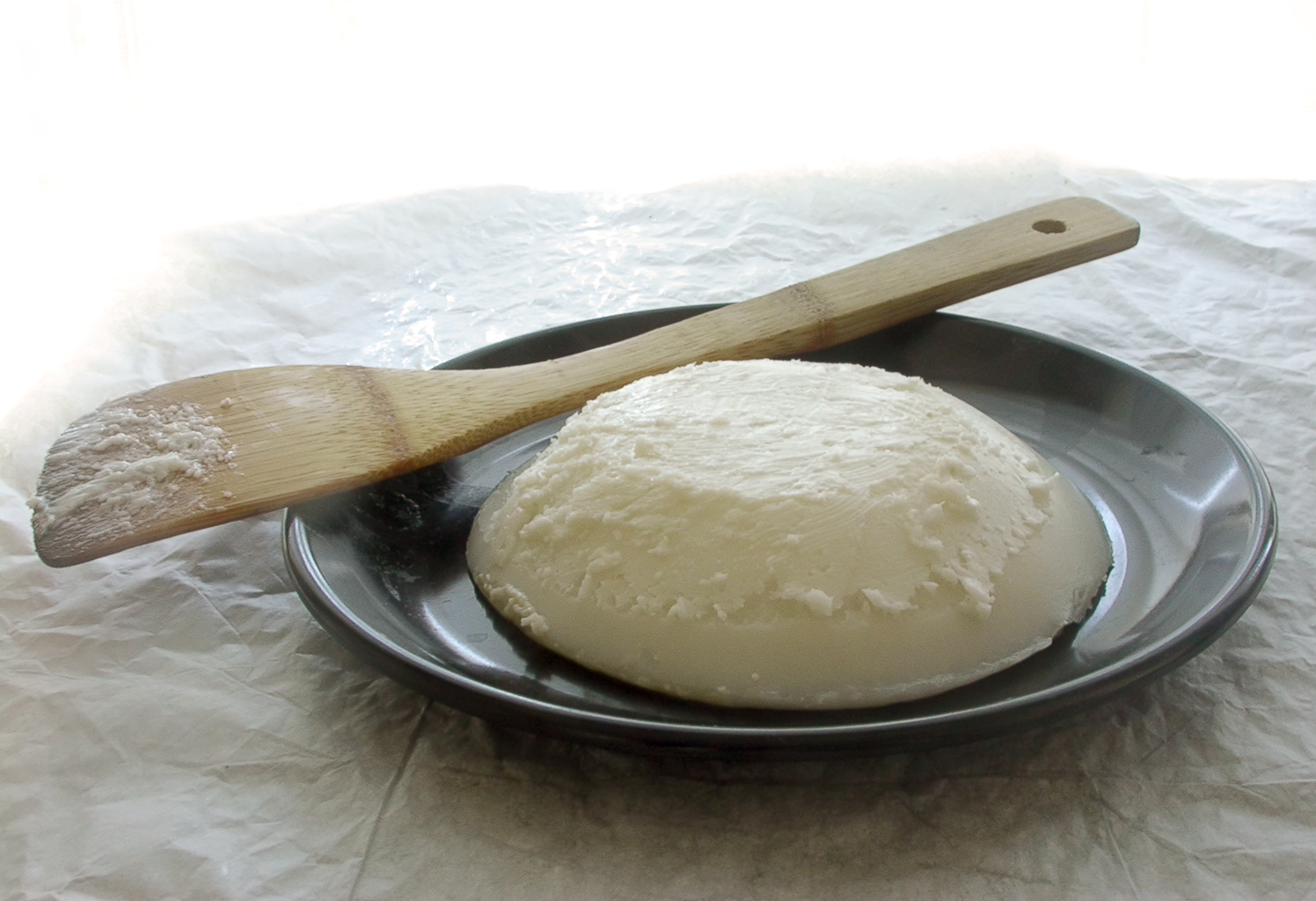
Lard
Lard is a semi-solid white fat product obtained by rendering the fatty tissue of a pig.[3][4] It is distinguished from tallow, a similar product derived from fat of cattle or sheep.
For other uses, see Lard (disambiguation).Fat composition
38–43%:
Palmitic acid: 25–28%
Stearic acid: 12–14%
Myristic acid: 1%
56–62%
47–50%:
Oleic acid: 44–47%
Palmitoleic acid: 3%
Linoleic acid: 6–10%[1][2]
3,770 kJ (900 kcal)
backfat: 30–40 °C (86–104 °F)
leaf fat: 43–48 °C (109–118 °F)
mixed fat: 36–45 °C (97–113 °F)
121–218 °C (250–424 °F)
0.917–0.938
45–75
3.4
190–205
0.8%[2]
Lard can be rendered by steaming, boiling, or dry heat. The culinary qualities of lard vary somewhat depending on the origin and processing method; if properly rendered, it may be nearly odorless and tasteless.[5] It has a high saturated fatty acid content and no trans fat. At retail, refined lard is usually sold as paper-wrapped blocks.
Many cuisines use lard as a cooking fat or shortening, or as a spread in the same ways as butter. It is an ingredient in various savoury dishes such as sausages, pâtés, and fillings. As a replacement for butter, it provides flakiness to pastry. In western cuisine, it has ceded its popularity to vegetable oils, but many cooks and bakers still favor it over other fats for certain uses.
Nutritional value per 100 g (3.5 oz)
3,765.6 kJ (900.0 kcal)
39 g
45 g
11 g
Quantity
Quantity
95 mg
0.1 mg
0.2 mg
Other uses
Rendered lard can be used to produce biofuel[51] and soap. Lard is also useful as a cutting fluid in machining. Its use in machining has declined since the mid-20th century as other specially engineered cutting fluids became prominent. However, it is still a viable option. Lard and other animal fats were formerly used as an anti-foaming agent in industrial fermentation processes such as brewing; there, animal fats have been superseded by polyethers.[52]